

Steel has high strength and toughness and can withstand a variety of natural disasters. For example, in windy weather, steel structure farm have strong wind resistance, can withstand large wind pressure, and are not easy to collapse; compared with traditional brick and wood structures, steel structures can effectively reduce the risk of serious damage to farms due to earthquakes with their good ductility and integrity during earthquakes, and ensure the safety of breeding facilities and livestock and poultry.
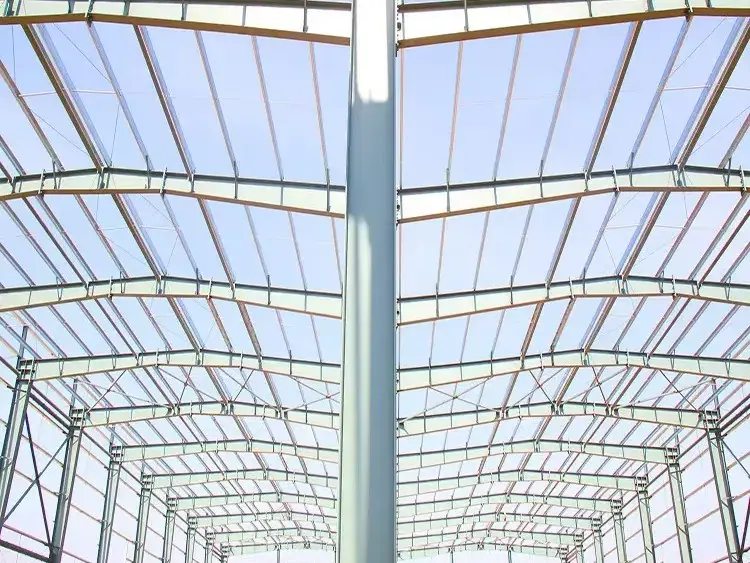
Steel has high strength and toughness and can withstand a variety of natural disasters. For example, in windy weather, steel structures have strong wind resistance, can withstand large wind pressure, and are not easy to collapse; compared with traditional brick and wood structures, steel structures can effectively reduce the risk of serious damage to farms due to earthquakes with their good ductility and integrity during earthquakes, and ensure the safety of breeding facilities and livestock and poultry.
The structural form of steel structures is flexible, with large internal space and no excessive beams and columns. For different breeding scales and types of breeding, the layout of the breeding area can be flexibly adjusted according to actual needs, such as reasonable planning of functional divisions such as breeding houses, feed storage areas, and hatching areas to meet the living space requirements of livestock and poultry or other special breeding organisms at different growth stages, improve land utilization, and reduce land occupation.
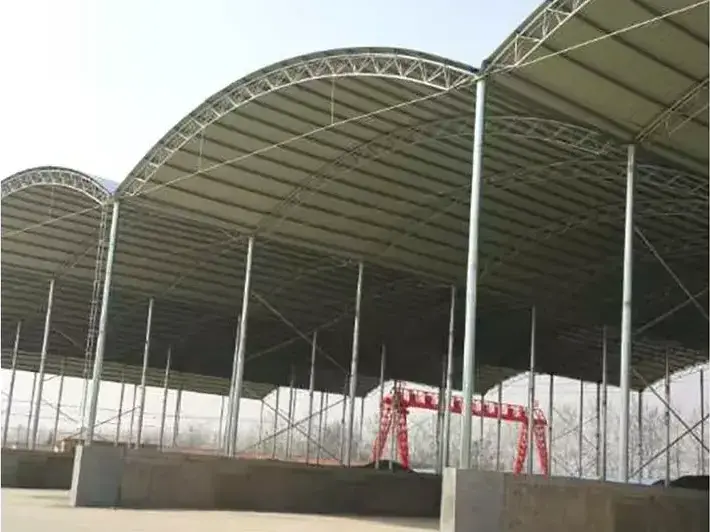
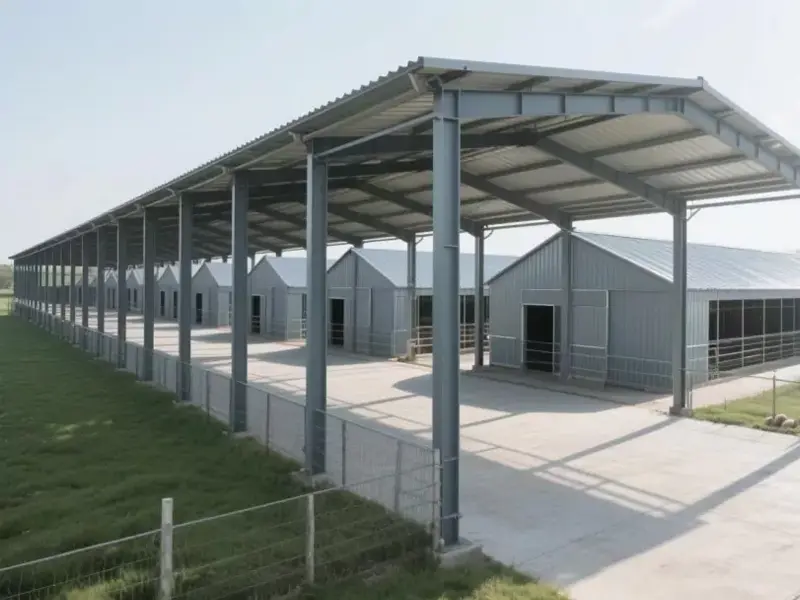
Steel structure components can be prefabricated in factories and then transported to the site for assembly. This industrialized production model greatly shortens the construction period. Compared with traditional construction methods, it can be put into use for breeding in advance, reducing the economic cost consumption caused by the long construction period and the risk of missing the best breeding time.
Steel has good anti-corrosion performance. After professional anti-corrosion treatment, it can maintain structural stability for a long time and reduce the number of maintenance times. At the same time, if local damage occurs, it is relatively simple and convenient to replace a single component, which will not have a significant impact on the overall structure, reducing the cost of later maintenance and management difficulty.
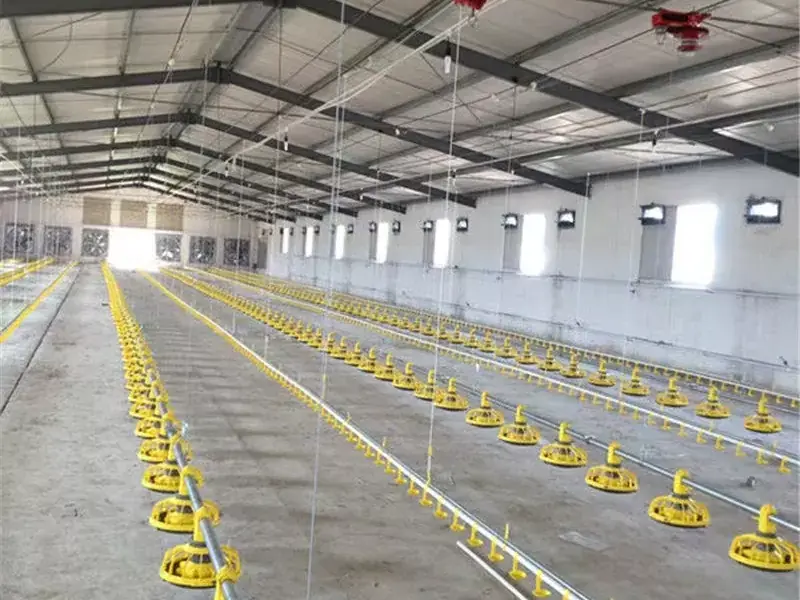
● Steel structure farms for livestock and poultry breeding
▪ The living habits of livestock and poultry should be fully considered during design. For example, for pig farms, sufficient pen area should be guaranteed to meet the activity and growth needs of pigs. A reasonable ventilation system should be set up to ensure fresh air, such as a combination of mechanical ventilation and natural ventilation. Ventilation can reduce the temperature in the house in summer and prevent pigs from suffering from heat stress due to high temperature. At the same time, attention should be paid to the treatment of the ground and walls. The ground should be treated with anti-slip treatment to prevent pigs from slipping and getting injured; the walls should be well insulated to ensure that the temperature in the house is suitable in winter.
▪ The design of chicken farms should focus on lighting and spatial layout. Chicks have strict requirements for light. During the brooding stage, they need specific light duration and intensity to promote growth and development. Therefore, it is crucial to reasonably design the window position or install artificial lighting equipment. The space of the chicken house should be divided into reasonable zones according to the breeding density to facilitate daily management and disease prevention and control. Each chicken house should have good isolation facilities.
o Special breeding steel structure farm
The requirements of different special breeding objects vary greatly. Taking the snake farm as an example, it is necessary to create an environment that simulates the natural ecology. Design a suitable temperature and humidity control system, because snakes are sensitive to changes in ambient temperature and humidity. Too high or too low temperature may affect the growth, reproduction and even endanger the life of snakes. In the topographic layout of the farm, multiple different temperature and humidity areas can be divided to meet the environmental needs of snakes at different growth stages. At the same time, a fully enclosed and safe environment should be ensured to prevent snakes from escaping, and protective facilities should be strengthened around them. For bee farms, in addition to building bee breeding sheds, it is necessary to pay attention to the presence of sufficient nectar plants around the site, and at the same time design a reasonable ventilation and sunshade structure to provide the bee colony with a suitable environment in summer to avoid damage to the bee colony caused by high temperature.
● Portal rigid frame structure
This is a more common form of steel structure. Its spatial layout is simple and flexible, and it has good lateral stability. The roof is mostly sloped, which is conducive to drainage. When designing, the wind load and snow load should be calculated according to the climatic conditions of the area where the farm is located. For example, in areas with heavy snowfall in the north, the roof slope should be appropriately increased to prevent excessive snow accumulation from causing excessive pressure on the roof structure. The form of the column foot is also critical. According to the basic conditions and structural requirements, the rigid or hinged column foot should be reasonably selected to ensure the stability of the overall structure.
● Frame structure
The frame structure has strong integrity and spatial variability, and can be applied to large-scale breeding projects with high space requirements, such as large-scale integrated breeding farms. It can meet the requirements of complex functional zoning and has more advantages in the case of complex process layout. However, when designing, it is necessary to accurately calculate the bearing capacity and cross-sectional dimensions of beams and columns, strengthen the node design, and ensure that the structure always remains safe and reliable under the various loads brought by frequent personnel and equipment operations and livestock and poultry activities during the breeding process.
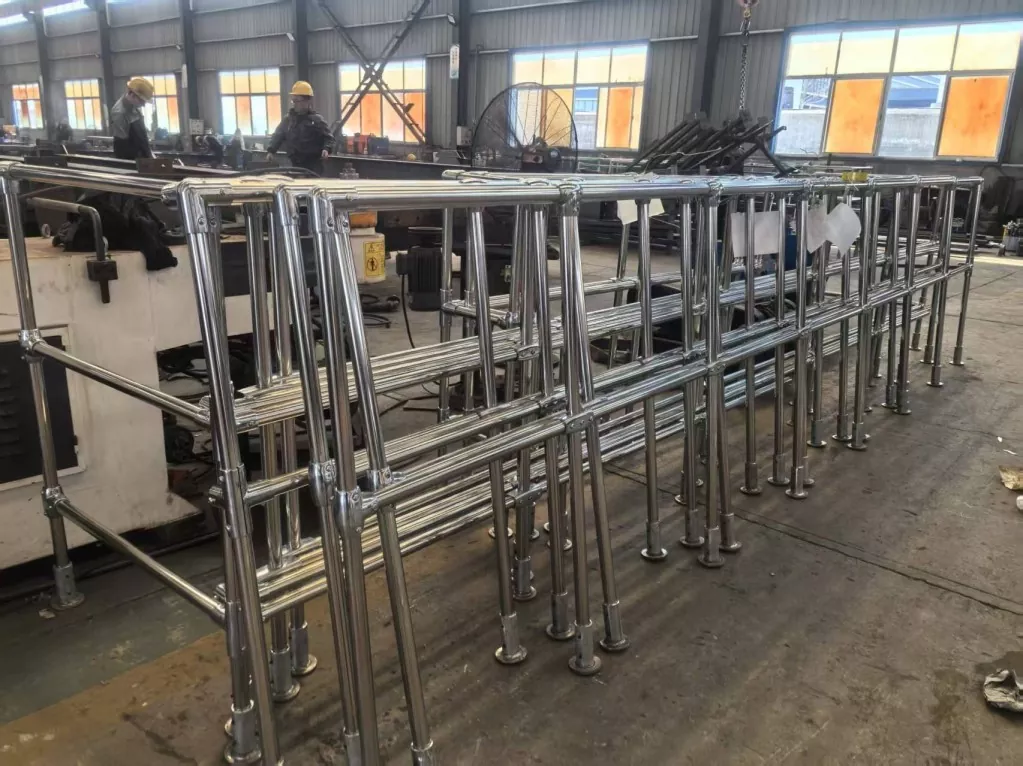
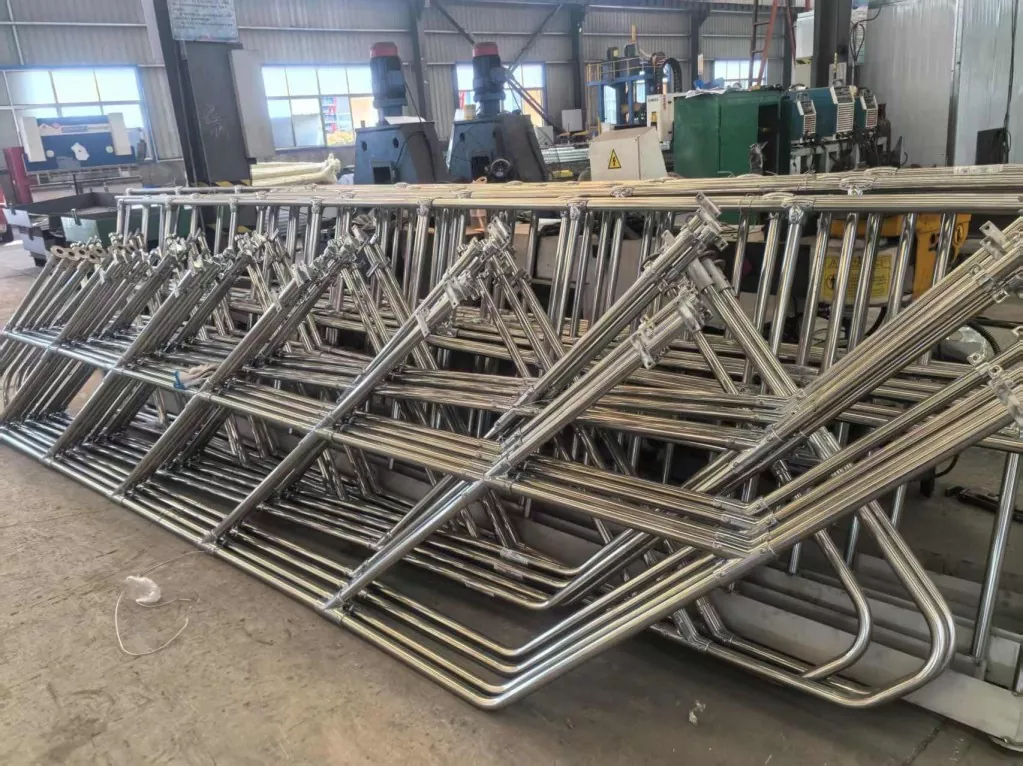
● Site survey
Carry out detailed survey of the geological conditions of the proposed site to understand the soil type, bearing capacity, etc. If a farm is built on a soft soil foundation, foundation treatment is required, such as using replacement filling method, tamping method, etc. to strengthen the foundation to avoid structural deformation and damage due to foundation settlement. At the same time, analyze the natural environment around the site, including factors such as wind direction and light, so as to reasonably plan the layout of the building so that the wind direction is conducive to ventilation and sufficient light utilization. For example, in the southern region, the dominant wind direction in summer is southeast wind, and the breeding house is arranged in a north-south direction for the best ventilation effect.
● Determine the construction scale and function
Determine the required breeding area, ancillary facilities area, etc. according to the breeding species and expected breeding scale. For example, if a chicken farm plans to breed 5,000 laying hens, it is necessary to determine the building area of the chicken house, feed processing workshop, egg storage room, etc., and design a reasonable layout of supporting facilities such as water, electricity, and gas according to functional requirements to ensure that the farm can operate efficiently after completion.
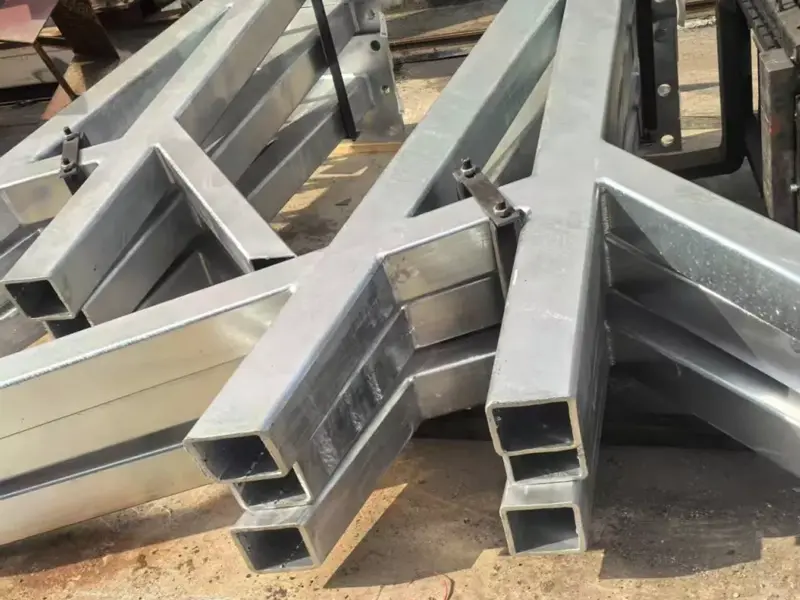
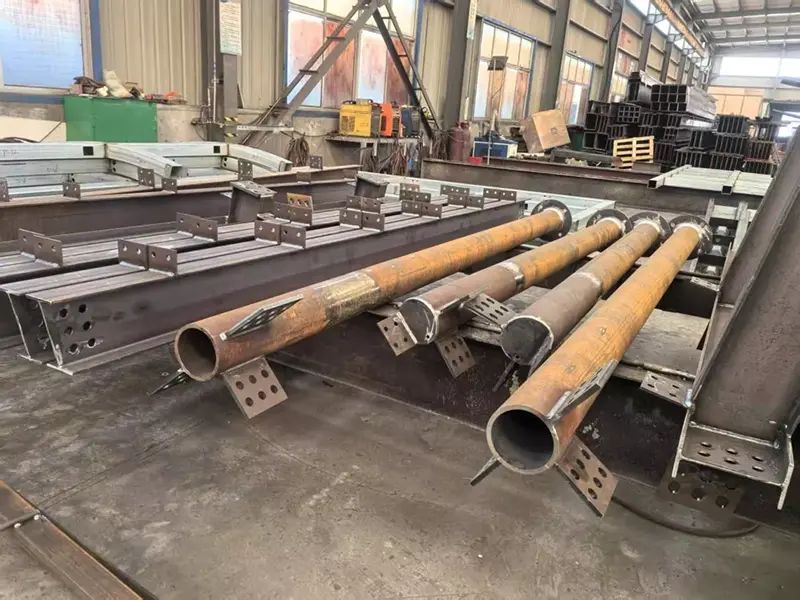
Our designers carry out structural calculations and architectural design based on the preliminary planning and site conditions, and issue complete design drawings, including building plans, sections, steel structure construction drawings, water supply and drainage and electrical system diagrams, etc. The construction unit formulates a detailed construction plan based on these drawings. At the same time, the design process can be combined with BIM technology for three-dimensional simulation to find problems in the design in advance, optimize the plan, and improve construction efficiency and quality.
● Material selection
Accurately purchase major building materials such as steel, color steel plates, and insulation materials according to design requirements. Steel materials should give priority to products with reliable quality and in line with national standards to ensure structural strength and durability. Color steel plates are used as wall and roof materials. Products with good thermal insulation and anti-corrosion properties should be selected. For example, polystyrene sandwich color steel plates are suitable for farms with general insulation requirements; for those with higher insulation requirements, polyurethane sandwich color steel plates can be used. And strictly control the materials of steel structure farms, inspect the incoming materials, and ensure that they meet the design standards.
● Prefabrication
The steel is prefabricated in the processing plant according to the design drawings by cutting, welding, drilling, etc. to make various components, such as steel beams, steel columns, purlins, etc. During the prefabrication process, the processing technology standards are strictly implemented to ensure the dimensional accuracy of the components. For example, when making steel beams, the gap between the flange plate and the web plate, the welding quality, etc. must meet the requirements of the specifications. The processed components are numbered and marked for easy transportation and on-site assembly.
The foundation is constructed according to the design requirements. Common foundation forms include independent foundations and strip foundations. During the foundation excavation process, the excavation size and depth are controlled to avoid over-excavation or under-excavation. The bottom of the foundation is compacted, the cushion layer is laid, and then the foundation formwork and steel bars are installed, and the concrete is poured according to the designed concrete strength grade. During the pouring process, vibration measures are taken to ensure that the concrete is dense. After the foundation is poured, it is maintained in time, and the next step of construction is carried out after reaching the design strength. For example, when constructing the steel structure foundation of the pig house, it is necessary to consider the possible impact of the pig herd activities on the ground around the foundation, and appropriate protective treatment is carried out around the foundation.
First, build a construction platform to ensure the safety of the installation operation. According to the construction sequence and component number, the prefabricated components are hoisted to the installation location for assembly. First install the steel column, control the verticality and elevation of the column by the theodolite and level, and fix it after adjustment. Then install the steel beam to form a frame structure. During the installation process, check the overall size and deformation of the structure while installing. Install secondary structural components such as purlins and wall beams. The installation spacing of the purlins must strictly follow the design requirements to ensure that the flatness of the roof and wall meets the requirements. Finally, install the color steel plate, pay attention to the overlap between the plates to prevent rainwater leakage. During the installation process, do a good job of high-altitude work safety protection, and all staff wear protective equipment such as safety helmets and safety belts.
Install various supporting facilities, including ventilation equipment, temperature control equipment, feeding and drinking water systems, lighting systems, feces treatment systems, etc. After the installation is completed, debug and operate all systems in the entire farm to check whether the equipment is operating normally and whether each function meets the design requirements. Organize relevant departments and personnel to conduct completion acceptance, and check the quality of steel structure projects and the operation of supporting facilities in accordance with design standards and construction specifications. Problems found during acceptance should be rectified in a timely manner to ensure that the farm meets safe and efficient operating conditions.
● Long-term cost advantages
Although the initial investment in the construction of steel structure farms is relatively high compared to traditional breeding buildings, in the long run, its durability and low maintenance costs can save a lot of money. For example, traditional brick and wood structure farms may need to repair and maintain the roof and walls every few years, while steel structures do not require large-scale structural repairs for 15-20 years after reasonable anti-corrosion treatment. At the same time, efficient space utilization and fast construction speed can realize breeding production in advance, obtain benefits, and accelerate capital recovery.
● Improved production efficiency
A suitable breeding environment can promote the growth of livestock and poultry, improve product quality and breeding output. Accurate environmental control such as light, temperature, and humidity is conducive to the healthy growth of livestock and poultry, reduce morbidity, and reduce treatment costs. For example, under scientific environmental control, the egg production rate of laying hens can be increased by 10% - 15%, and the fattening time of pigs can be shortened by 1 - 2 weeks, thus bringing more considerable economic benefits.
● Stabilize market supply
Large-scale steel structure farms can effectively ensure the stable supply of livestock and poultry products. Through scientific breeding management and disease prevention and control systems, it can improve breeding efficiency and product quality, increase the total supply of meat, eggs and other products on the market, stabilize market prices, meet the needs of urban and rural residents for high-quality agricultural products, and have positive significance for safeguarding people's livelihood.
● Drive industrial development
During the construction and operation of steel structure farms, it can drive the development of surrounding related industries, such as feed production, veterinary drug research and development, transportation and logistics, etc. It creates more jobs for the local area, promotes farmers' income growth, and plays an important role in promoting the development of rural industrial economy and rural revitalization. At the same time, advanced breeding technology and management models can be demonstrated and promoted to improve the technical level of the breeding industry in the entire region.
Well-designed steel structure farms are convenient for supporting efficient manure treatment systems and harmless treatment facilities. For example, the dry manure cleaning process can be used to collect manure for composting in time, which can reduce the generation of sewage; the biogas project can be used to ferment part of the manure to produce biogas for energy supply in the farm, reducing dependence on traditional energy; the aquaculture sewage can meet the discharge standard or recycling standard after treatment, reducing the pollution of surrounding water bodies, soil and other environments, forming a virtuous cycle of ecological aquaculture, energy conservation and emission reduction, and meeting the requirements of sustainable development.
This product has been widely used in modern industrial buildings due to their flexibility, economy and rapid construction. Our factory designers can provide a variety of design suggestions and plans from design drawings, design plans, construction plans, etc. according to customer needs.
Main materials
Item Material Material details
Steel frame
H-shaped steel columns and beams Q355B, A36, A572 steel, painted or galvanized
Crane beams Q355B, A36, A572 steel, painted or galvanized
Secondary support Roof purlins Q235B C/Z steel galvanized
Wall purlins Q235B C/Z steel galvanized
Tie clips Q235, φ89*3 round steel pipe
Knee bracket Angle steel, Q235, L50*4
Roof horizontal support φ20, Q235B steel bar, painted or galvanized
Column vertical support φ20, Q235B steel bar, painted or galvanized
Casing φ32*2.0, Q235 steel pipe
Tie rod Φ10 round steel Q235
Roof and wall
Protection system Wall and roof panels Corrugated steel sheet/sandwich panel
Gutters Color steel sheet/galvanized steel sheet/stainless steel
Trim and flash Color steel sheet
Downspout PVC
Self-tapping screws
Fasteners system Anchor bolts Q235 steel
High-strength bolts Its specifications are determined according to the steel structure design.
Ordinary bolts
Nuts
Windows and doors Windows Aluminum windows
Doors Choose according to requirements, can be EPS doors, windproof doors, high-speed rolling doors, industrial sliding doors, etc.
If you are interested in our products, please let us know the following information so that we can design.
1. Purpose: garage, warehouse, workshop, showroom, etc.
2. Location: In which country will it be built?
3. Local climate: wind speed, snow load (maximum wind speed)
4. Dimensions: length * width * height
1. Are you a manufacturing plant or a trading company?
We are a manufacturing plant. You are welcome to visit us at any time. In the workshop, there is a complete and advanced system of steel structure and plate manufacturing equipment. So we can ensure good quality and competitive price.
2. How is your quality control?
Our products have passed EU CE certification, quality ISO9001:2016. We have dedicated quality inspectors to inspect the whole process of products.
3. Can you provide design services?
Yes, we have a team of engineers who can design for you according to your requirements. Building drawings, structural drawings, processing details and installation drawings, and let you confirm at different times of the project.
4. What is the delivery time?
The delivery time depends on the size and quantity of the building. Generally within 30 days after receiving the payment. Large orders are allowed to be shipped in batches.
5. Do you provide installation services?
We will provide you with detailed construction drawings and construction manuals to help you build and install the building step by step.
6. What is the payment term?
30% deposit and 70% balance before shipment.
7. How to get a quote from you?
You can contact us by email, phone, WhatsApp, etc. 24*7, and you will get a reply in any time